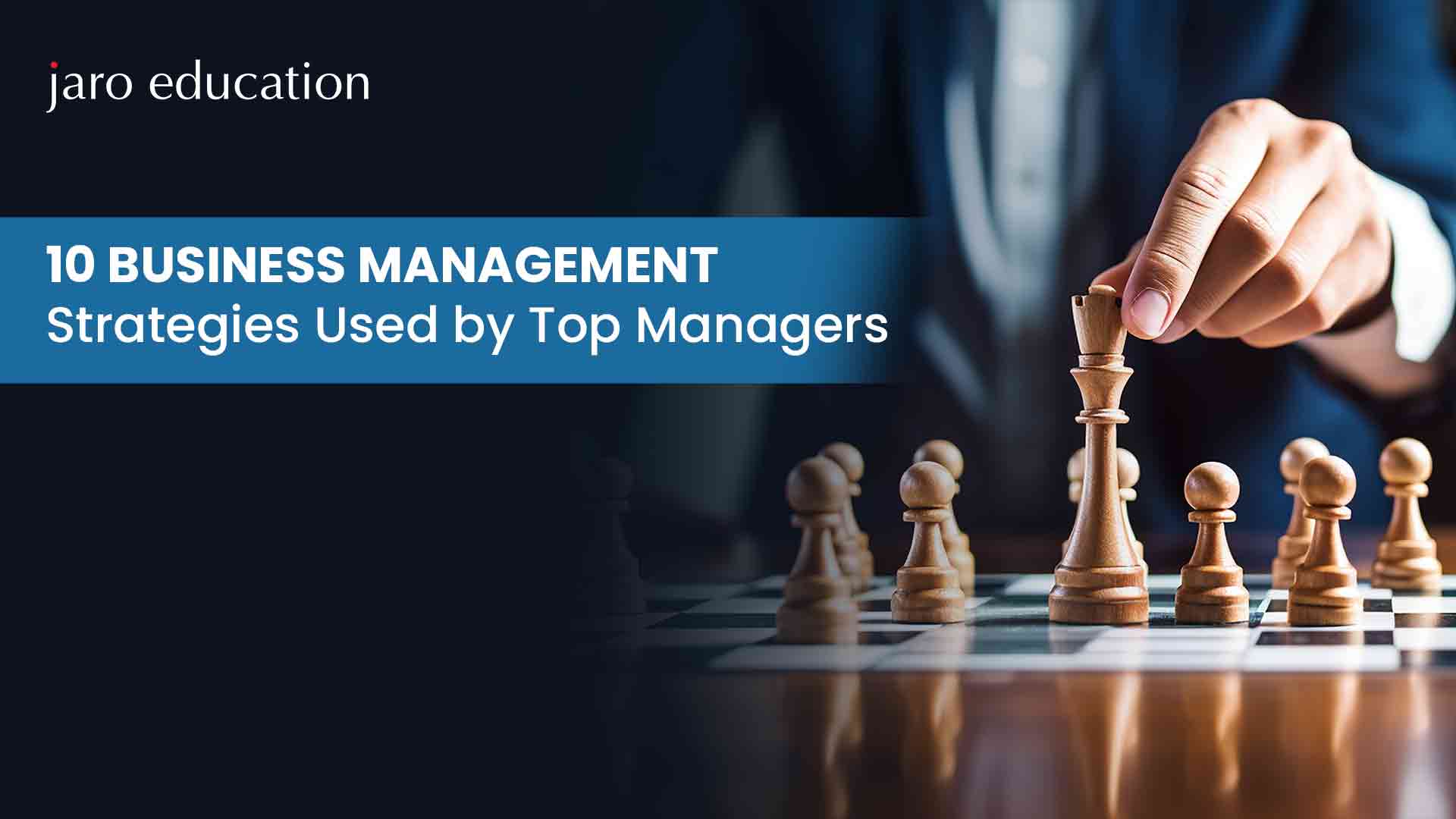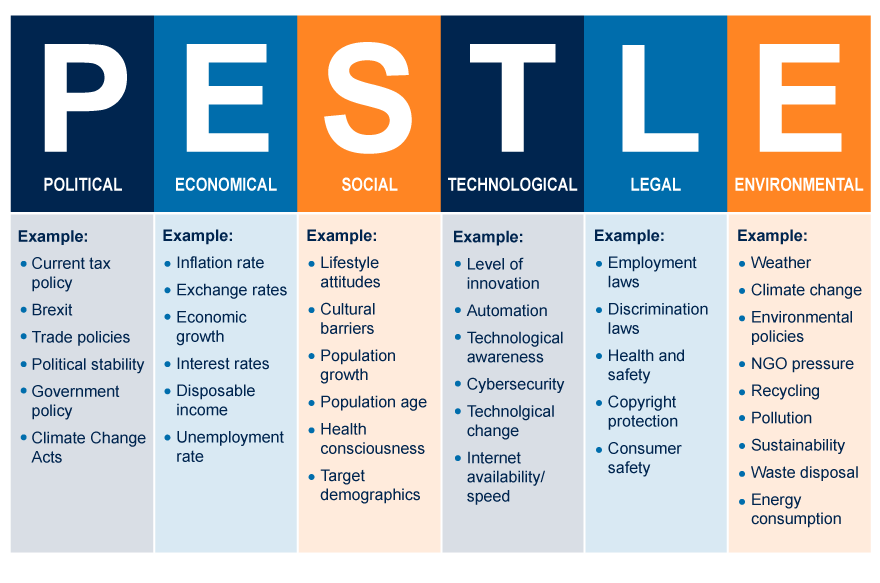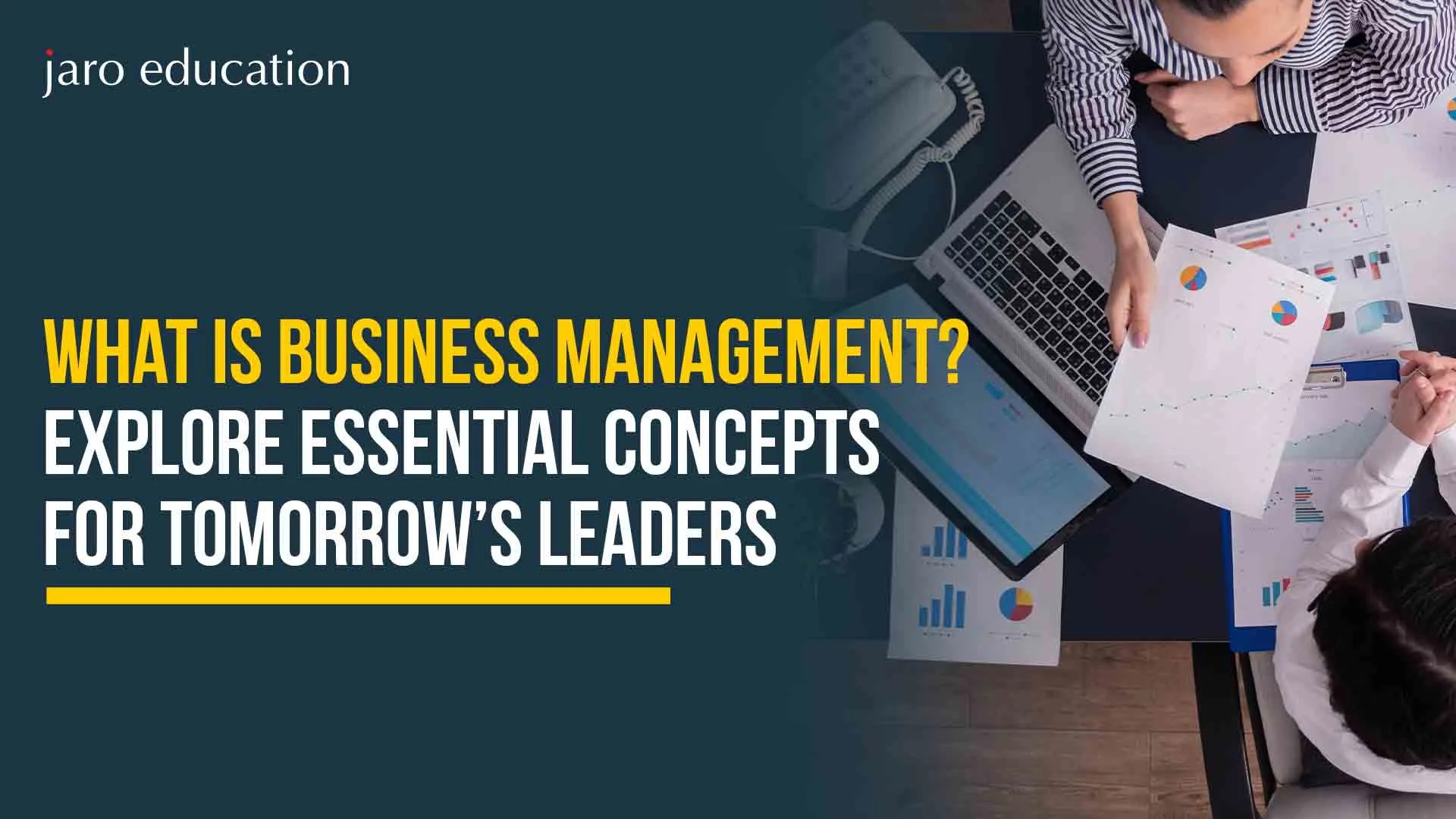10 Business Management Strategies Used by Top Managers
Table of Contents

- jaro education
- 22, March 2024
- 10:00 am
Business management strategies encompass a carefully crafted set of planned initiatives and actions undertaken by a company to attain distinct objectives, generate value for the organization and stakeholders, and secure a competitive edge in the market. This strategic framework involves pivotal decisions regarding resource allocation, differentiation from competitors, and responses to shifts in the business environment. Recognized as indispensable for a company’s success, business strategy serves as a guiding force, shaping its overall direction and aiding in informed decision-making to navigate challenges and capitalize on opportunities.
The fact that 75% of prosperous companies utilize a formal, pre-established system to communicate and oversee their strategy highlights that a significant majority of successful businesses embrace a structured and predetermined approach to manage and convey their strategic initiatives. This underscores the essential nature of having a well-defined system for strategic management, underscoring that thriving organizations recognize the value of transparent communication, thorough planning, and effective oversight in accomplishing their business objectives.
In this blog, we’ll explore 10 strategies that top managers use for effective business management. These strategies give us a closer look at how successful companies operate and achieve their goals in the ever-changing business world.
1. SWOT Analysis Strategy
The SWOT Analysis Strategy serves as an all-encompassing method employed by top-level managers to assess and comprehend the internal and external factors shaping an organization. The acronym SWOT encapsulates four pivotal components:
1. Strengths
Definition
- These are internal attributes and resources that support a successful outcome. Strengths are what the organization excels at or possesses more advantageously than competitors.
Examples
- A strong brand reputation, a loyal customer base, unique technology, patents, a skilled workforce, or efficient distribution networks.
Purpose
- Identifying strengths helps organizations leverage their unique capabilities to gain a competitive edge.
2. Weaknesses
Definition
- These are internal factors that might hinder the achievement of an objective. Weaknesses are areas where the organization may be lacking or is at a disadvantage compared to others.
Examples
- Limited research and development facilities, outdated technology, insufficient marketing strategy, or resource constraints.
Purpose
- Recognizing weaknesses allows organizations to manage and eliminate threats that could otherwise catch them off guard.
3. Opportunities
Definition
- Recognizing weaknesses allows organizations to manage and eliminate threats that could otherwise catch them off guard.
Examples
- Emerging markets, changes in regulatory landscapes that might lead to demand for new products or services, or technological advancements.
Purpose
- Identifying opportunities enables organizations to pursue new growth avenues and to make strategic decisions that align with their objectives.
4. Threats
Definition
- External challenges that could cause trouble for the business or project. Threats might stem from various sources, including economic downturns, increased competition, or changes in consumer behavior.
Examples
- A new competitor entering the market, a change in regulatory policies that could restrict business operations or a significant shift in consumer preferences.
Purpose
- Understanding threats is crucial for risk management and contingency planning, allowing organizations to prepare for or mitigate potential negative impacts.
Thus, the SWOT Analysis entails a thorough scrutiny of these four elements, offering a comprehensive perspective on the organization’s present condition. Through the identification of internal strengths and weaknesses and external opportunities and threats, managers can formulate strategies that leverage strengths, address weaknesses, capitalize on opportunities, and mitigate threats. This strategic analysis contributes to decision-making processes, enabling businesses to align their actions with overarching goals and adeptly navigate the intricate dynamics of the business environment.
To meet the shifting demands of the business environment, Chandigarh University, in collaboration with Jaro Education, introduces a Master of Business Administration (MBA) program. This thoughtfully designed course aims to empower aspiring leaders with a comprehensive understanding of strategic management methodologies.
2. PESTLE Planning Approach
The PESTLE analysis stands as a comprehensive strategic planning tool utilized by organizations to assess and comprehend external factors influencing their operations and decision-making processes. Represented by the acronym PESTLE, it encapsulates Political, Economic, Social, Technological, Legal, and Environmental factors. Let’s delve into a detailed exploration of each element:
1. Political
- Political factors encompass the influence of government policies, stability, and overall political trends on business operations.
- Organizations need to analyze how government decisions, regulations, and political stability can affect their strategies and performance.
- Example: Changes in taxation policies or trade agreements can significantly impact a business’s financial landscape.
2. Economic
- Economic factors focus on elements such as inflation rates, exchange rates, and the overall economic growth or recession within a region.
- Organizations analyze how these economic factors may impact consumer behavior, the demand for products or services, and overall market conditions.
- Example: During economic downturns, consumers might reduce spending, influencing the demand for certain goods and services.
3. Social
- Social factors delve into societal aspects, including cultural trends, demographics, and shifts in consumer preferences.
- Organizations analyze how societal changes can impact their products, marketing strategies, and overall brand perception.
- Example: Growing environmental awareness leads to increased demand for sustainable and eco-friendly products.
4. Technological
- Technological factors involve assessing the impact of advancements in technology on the industry and the organization.
- Organizations need to stay abreast of technological trends and innovations that can influence their operations, production processes, and customer interactions.
- Example: Rapid developments in digital technology influence the way businesses operate, market, and deliver products and services.
5. Legal
- Legal factors involve an examination of laws and regulations that can affect the organization’s activities, compliance, and overall legal environment.
- Organizations must stay vigilant and adhere to pertinent laws and regulations in their operational areas.
- Example: Changes in labor laws affecting human resource management practices and employment policies.
6. Environmental
- Environmental factors consider issues related to the natural environment, sustainability, and climate change.
- Organizations assess how their operations impact the environment and respond to growing concerns about eco-friendliness and sustainability.
- Example: Increasing consumer demand for products and services that align with environmental sustainability goals.
To understand PESTLE Analysis as a whole, here’s another example:
Imagine a global tech company planning to expand its operations into a new country. By conducting a PESTLE analysis, the company can evaluate the political stability, economic conditions, social and cultural dynamics, technological infrastructure, legal requirements, and environmental concerns in the new market. This analysis informs strategic decision-making, risk assessment, and adaptation strategies to ensure the organization aligns with the specific external factors influencing the business environment.

*open.edu
3. Balanced Scorecard Strategy
The Balanced Scorecard (BSC) stands as a strategic performance management framework, facilitating organizations in translating their vision and strategy into tangible objectives and key performance indicators (KPIs). Conceived by Robert S. Kaplan and David P. Norton, the Balanced Scorecard extends beyond financial metrics to encompass non-financial perspectives, offering a more comprehensive view of organizational performance. Let’s delve into an elaboration of its key components:
1. Financial Perspective
- Focuses on financial outcomes and objectives that contribute to the organization’s success.
- Key financial indicators may include revenue growth, profitability, cost control, and return on investment.
- Example: Achieving a targeted annual revenue growth of 15%.
2. Customer Perspective
- Concentrates on delivering value to customers and meeting their expectations.
- Key indicators may include customer satisfaction, market share, and customer retention rates.
- Example: Maintaining a customer satisfaction rating of 90% or above.
3. Internal Business Processes Perspective
- Addresses the internal processes critical for delivering value to customers and achieving financial objectives.
- Key indicators may include process efficiency, quality improvement, and innovation metrics.
- Example: Streamlining the production process to reduce lead times by 20%.
4. Learning and Growth (or Employee) Perspective
- Focuses on the organization’s ability to innovate, learn, and grow.
- Key indicators may include employee training, skill development, and overall workforce engagement.
- Example: Increasing employee participation in professional development programs by 25%.
Balanced Scorecard Strategy – Example:
Consider a retail company adopting the Balanced Scorecard. From a financial perspective, the company aims to increase profitability. From the customer’s perspective, the focus is on enhancing the shopping experience. Internally, processes are optimized for inventory management and supply chain efficiency. From the learning and growth perspective, employee training programs are implemented to enhance product knowledge and customer service skills. The Balanced Scorecard approach ensures a synchronized and strategic approach to achieving overall organizational success.
4. Six Sigma Excellence
Six Sigma is a data-driven methodology focused on process improvement and achieving operational excellence by minimizing variations and defects. Originally developed by Motorola, Six Sigma has become a widely adopted quality management approach. Here’s an elaboration of Six Sigma principles and its key components:
1. Define
- Clearly define the problem or process that needs improvement.
- Identify the project goals, scope, and deliverables.
- Example: Define the specific defects in the manufacturing process causing product quality issues.
2. Measure
- Collect data to quantify the current status of the process.
- Identify key process metrics and establish measurement systems.
- Example: Measure the defect rate in the current manufacturing process.
3. Analyze
- Analyze the data to identify the root causes of defects or variations.
- Use statistical tools and techniques to pinpoint areas for improvement.
- Example: Analyze the data to determine the factors contributing to defects.
4. Improve
- Devise and execute solutions to rectify identified issues.
- Optimize the process to reduce defects and improve overall performance.
- Example: Implement process modifications to reduce variability and defects.
5. Control
- Establish control measures to ensure sustained improvement.
- Implement monitoring systems to track ongoing process performance.
- Example: Implement control charts and ongoing monitoring to prevent the recurrence of defects.
How does Sig Sigma benefit a company?
Consider a manufacturing company implementing Six Sigma to improve the production process of a specific product. By analyzing data on defects, the Six Sigma team identifies the root causes contributing to variations. Through the improvement phase, process modifications are implemented, leading to a significant reduction in defects. Control measures, such as regular monitoring and ongoing training, are established to sustain the improvements over time. The Six Sigma approach ensures a systematic and data-driven method for achieving excellence in production processes.
5. Agile Management Method
Agile management is an iterative and flexible approach to project management and product development that prioritizes collaboration, customer feedback, and small, rapid releases. Originally designed for software development, Agile has expanded its influence across various industries due to its adaptability. Here’s an elaboration of the Agile management method:
Key Principles
1. Iterative Development
- Agile adheres to an iterative and incremental development methodology.
- Projects are segmented into small, manageable components, and each iteration yields a potentially deployable product increment.
2. Customer Collaboration
- Customer feedback is actively sought and valued throughout the development process.
- Regular interactions with customers ensure that the product aligns with their evolving needs.
3. Adaptability to Change
- Agile embraces changes in requirements even late in the development process.
- The ability to adapt to changing priorities is a fundamental aspect of Agile.
4. Cross-Functional Teams
- Cross-functional teams work collaboratively and include members with diverse skills.
- Team members collectively contribute to project tasks, fostering collaboration and flexibility.
5. Continuous Delivery
- Agile promotes continuous and frequent delivery of small, functional releases.
- This allows for rapid feedback, reduces time-to-market, and enhances overall project visibility.
Agile Frameworks
1. Scrum
- Scrum is a popular Agile framework with defined roles, events, and artifacts.
- It emphasizes fixed-length iterations called sprints and includes ceremonies like sprint planning, daily stand-ups, and sprint reviews.
2. Kanban
- Kanban is a visual management method that focuses on continuous delivery.
- Work items move through a visual board with columns representing different stages of the workflow.
3. Extreme Programming (XP)
- XP, an Agile methodology, places a strong emphasis on technical excellence and ongoing feedback.
- Practices encompass pair programming, test-driven development, and frequent release cycles.
How Scrum is Beneficial for a Company?
Imagine a software development team embracing Scrum. The team outlines a feature backlog, organizes two-week sprints, and conducts daily stand-up meetings. At the conclusion of each sprint, they present a potentially shippable product increment to stakeholders for feedback. Utilizing this input, the team refines subsequent sprints, ensuring the product aligns with user expectations and market demands. Agile’s iterative and customer-centric approach plays a pivotal role in delivering a high-quality software product successfully and punctually.
6. Kaizen Continuous Improvement
Kaizen, a Japanese term meaning “change for better” or “continuous improvement,” is a philosophy and management approach that focuses on making incremental, ongoing improvements in processes, products, and systems. The Kaizen method encourages a culture of continuous learning and adaptation within an organization. Here’s an elaboration on the Kaizen continuous improvement strategy:
1. Continuous Incremental Improvement
- Kaizen promotes small, incremental changes over time rather than major overhauls.
- The philosophy is rooted in the belief that continuous, gradual improvements lead to significant advancements.
2. Employee Involvement
- Kaizen underscores the engagement of employees at every organizational level in the continuous improvement process.
- Frontline workers are actively encouraged to identify and propose improvements grounded in their day-to-day experiences.
3. Standardization
- Establishing standardized processes is crucial in Kaizen.
- Once improvements are identified, they are standardized to ensure consistency and sustainability.
4. Elimination of Waste
- Kaizen strives to eradicate waste in various forms, encompassing time, resources, and materials.
- Efficiency is bolstered by identifying and eliminating unnecessary steps or activities.
5. Visual Management
- Utilizing visual aids, like charts and graphs, is a common practice to enhance the clarity of information.
- The visualization of data aids in tracking progress and pinpointing areas for improvement.
Example:
Toyota, a pioneer in implementing Kaizen principles, transformed its manufacturing processes using continuous improvement. By involving employees in suggesting and implementing small changes to production lines, Toyota significantly improved efficiency and reduced waste. This commitment to Kaizen played a crucial role in Toyota’s success and became a benchmark for continuous improvement in the business world.
7. Blue Ocean Strategy
Blue Ocean Strategy is a business strategy framework pioneered by W. Chan Kim and Renée Mauborgne in their book “Blue Ocean Strategy: How to Create Uncontested Market Space and Make the Competition Irrelevant.” Centered on the creation of new market spaces, termed “blue oceans,” where competition is scarce or non-existent, this strategy offers a unique approach to business innovation. Let’s delve into a detailed exploration of the Blue Ocean Strategy:
1. Red Ocean vs. Blue Ocean
- In a red ocean, businesses compete in existing market spaces, often leading to intense competition and market saturation.
- The Blue Ocean Strategy suggests creating new, uncontested market spaces (blue oceans) to escape competition and foster innovation.
2. Value Innovation
- In a red ocean, businesses compete in existing market spaces, often leading to intense competition and market saturation.
- The Blue Ocean Strategy suggests creating new, uncontested market spaces (blue oceans) to escape competition and foster innovation.
3. Four Actions Framework
The strategy introduces the Four Actions Framework, which involves:
- Eliminate: Identifying factors to be eliminated from the industry.
- Reduce: Reducing certain industry factors below standard levels.
- Raise: Raising industry factors above standard levels.
- Create: Introducing entirely new factors.
4. Six Paths Framework
- The Six Paths Framework helps businesses explore new market opportunities by challenging conventional industry boundaries.
- This involves considering alternative industries, strategic groups, buyer groups, complementary products and services, functional or emotional appeal to buyers, and time.
Example:
Cirque du Soleil is often cited as a successful example of Blue Ocean Strategy. By combining elements of traditional circus acts with theatre and high production value, Cirque du Soleil created a new form of entertainment. This innovative approach attracted a broader audience and reduced competition, establishing Cirque du Soleil as a leader in the entertainment industry’s blue ocean.
8. Total Quality Management (TQM)
Total Quality Management (TQM) is a holistic management philosophy and methodology centered around continuous improvement, customer satisfaction, and employee engagement across all facets of an organization. Let’s delve into a comprehensive exploration of Total Quality Management:
1. Customer Focus
- Within the framework of Total Quality Management (TQM), a significant priority is given to understanding and meeting customer needs and expectations.
- This entails actively gathering feedback, conducting market research, and aligning organizational processes with the specific requirements of customers.
2. Continuous Improvement
- Within the framework of Total Quality Management (TQM), a significant priority is given to understanding and meeting customer needs and expectations.
- This entails actively gathering feedback, conducting market research, and aligning organizational processes with the specific requirements of customers.
3. Employee Involvement
- TQM encourages the active participation of all employees in quality improvement initiatives.
- Teams are often formed to address specific quality issues, fostering a culture of collaboration and shared responsibility.
4. Process-Centric Approach
- TQM focuses on improving processes across the entire organization.
- It involves identifying, analyzing, and optimizing processes to eliminate defects and enhance efficiency.
5. Data-Driven Decision Making
- Decisions within a TQM framework are based on data and statistical methods.
- Data analysis helps identify areas for improvement and ensures that decisions are grounded in evidence.
6. Supplier Relationships
- TQM extends beyond organizational boundaries to include suppliers.
- Building strong relationships with suppliers is essential to ensure the quality of incoming materials and components.
Example:
Toyota is often cited as a prime example of successful TQM implementation. The Toyota Production System (TPS), which incorporates TQM principles, focuses on eliminating waste, improving efficiency, and ensuring high product quality. Toyota’s commitment to continuous improvement and employee involvement has contributed to its reputation for producing reliable and high-quality vehicles.
9. Lean Operations Strategy
Lean operations, often associated with Lean Management or Lean Manufacturing, is a strategy that emphasizes the efficient use of resources, elimination of waste, and continuous improvement to deliver value to customers. Here’s an elaboration on the Lean Operations Strategy:
1. Elimination of Waste
Lean operations target the identification and elimination of various forms of waste, including overproduction, excess inventory, defects, waiting times, unnecessary motion, and underutilized talent.
2. Value Stream Mapping
Organizations employing lean principles conduct value stream mapping to visualize the entire process from product creation to delivery, aiming to streamline and optimize each step.
3. Continuous Improvement (Kaizen)
Kaizen, meaning continuous improvement, is at the core of lean operations.
Teams regularly engage in small, incremental improvements to processes, seeking ongoing efficiency gains.
4. Just-In-Time (JIT)
Lean operations implement a just-in-time approach, minimizing inventory levels and ensuring that materials are ordered and produced as needed. This reduces storage costs and the risk of obsolete inventory.
5. Pull System
Rather than pushing products through the production process, lean operations employ a pull system where items are produced in response to customer demand.
6. Flexible Workforce
Cross-training and flexibility in workforce assignments allow for smoother operations, enabling teams to adapt to changing demands and address bottlenecks.
Example:
The lean operations strategy was famously pioneered by Toyota in its production system. By implementing lean principles, Toyota revolutionized the automotive industry, achieving high efficiency, superior quality, and a reputation for continuous improvement. Other industries, including manufacturing and services, have since adopted lean principles to enhance their operations and deliver greater value to customers.
10. Risk Mitigation Framework
A Risk Mitigation Framework is a systematic approach employed by organizations to proficiently identify, assess, prioritize, and manage risks. This entails formulating strategies and action plans aimed at minimizing the impact and likelihood of potential risks, thereby enhancing the organization’s ability to navigate uncertainties with resilience. Let’s delve into a detailed exploration of the Risk Mitigation Framework:
Risk Identification
The framework initiates a thorough exploration of potential risks that could impact the organization’s objectives, encompassing financial, operational, strategic, compliance, and external factors like market fluctuations or geopolitical events.
Risk Assessment
Once identified, risks are assessed in terms of their potential impact and likelihood. Quantitative and qualitative methods are often employed to evaluate risks, considering factors such as financial consequences, reputation damage, and the probability of occurrence.
Prioritization
Risks are then prioritized based on their significance to the organization, with heightened attention given to high-priority risks that pose a greater threat or carry a higher potential impact.
Mitigation Strategies
Tailored mitigation strategies are developed for each identified risk, aiming to reduce the likelihood of occurrence and minimize potential impacts.
Action Plans
Detailed action plans are created to implement the chosen mitigation strategies. Action plans include timelines, responsible parties, and measurable indicators to track progress.
Monitoring and Control
Continuous monitoring of identified risks and the effectiveness of mitigation strategies is crucial. Regular reviews and updates ensure that the framework remains adaptive to changing risk landscapes.
Communication
Effective communication is integral throughout the risk mitigation process. Stakeholders are kept informed about potential risks, mitigation strategies, and progress to foster a collective understanding and commitment.
Scenario Planning
Organizations may engage in scenario planning to anticipate different future situations and develop corresponding risk mitigation strategies. This proactive approach helps in preparing for a range of potential challenges.
Example:
The financial industry often employs comprehensive risk mitigation frameworks to manage various risks, including market risk, credit risk, and operational risk. For instance, a bank may use sophisticated models and simulations to assess potential market fluctuations, implement risk mitigation strategies such as diversifying investments, and regularly review and update its risk management framework to align with evolving market conditions. This ensures the bank can navigate financial uncertainties while safeguarding the interests of its clients and stakeholders.
Conclusion
In conclusion, the top 10 business management strategies employed by visionary leaders encompass a diverse range of approaches, each tailored to address specific facets of organizational success.
Collectively, these strategies provide an intricate yet powerful foundation for steering organizations through the intricate terrain of the business realm. As we delve into the nuances of each strategy, it becomes apparent that their effective application demands a nuanced understanding of organizational dynamics, strategic foresight, and a commitment to fostering a culture of innovation and continuous improvement. By embracing these diverse strategies, visionary leaders position their organizations not just to endure challenges, but to adapt to change and seize emerging opportunities, ultimately thriving in the ever-evolving business landscape.
Aspiring professionals seeking to elevate their strategic management capabilities will find the MBA program an enriching journey, providing them with a comprehensive toolkit to thrive in the ever-evolving business landscape such as the one offered by Chandigarh University – Online Master of Business Administration, To know more about this course, contact Jaro Education.








12 thoughts on “10 Business Management Strategies Used by Top Managers”
I REALLY LIKE YOUR BUSINESS STRATEGIES IT HELPED TO MAKE ONLINE BUSINESS
Thanks! That means a lot. Please keep following us more more relevant content.
Great list of business management strategies from top managers! The insights and tips are practical and valuable for improving business operations and leadership.
Thanks! That means a lot. Please keep following us more more relevant content.
thanku to sharing valuable and importent info, great strategies
Thank you for your generous comment! It’s great to hear that the post was valuable to you.
Thank you for your kind words! Your thoughts are greatly appeciated
great info thanks to sharing great business management strategies
great info thanks to sharing great business management strategies really amazing info
Thank you for your insight. Being new to the entire blogging community, I greatly appreciate this article!
Excellent! Thanks for sharing. As examining the best way of blog commenting, for me I would prefer those positive comments
thnk to sharing great info